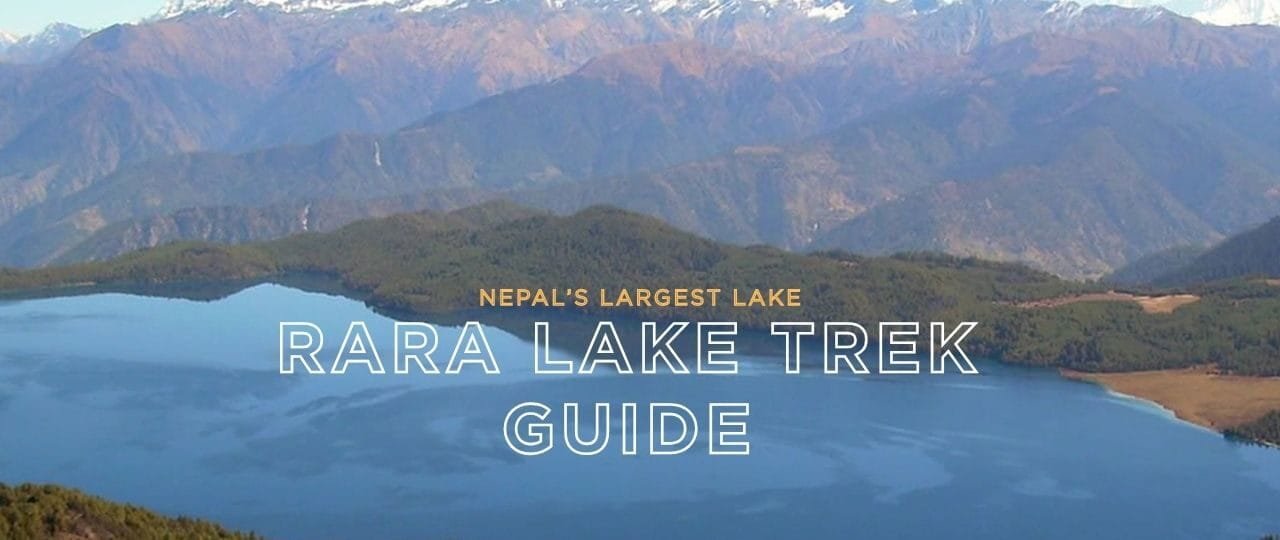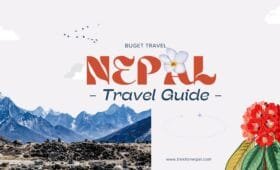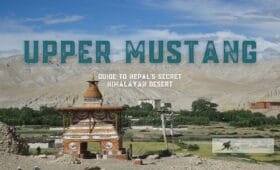The Rara Lake Trek is a hidden gem within Nepal’s vast trekking scene. While many adventurers set their sights on Everest or Annapurna, Rara Lake Trek offers a quieter, more soulful journey that meanders through remote, unspoiled forests and mountain settlements. Located in the far northwest corner of Nepal, Rara Lake stands as the country’s largest freshwater lake, famed for its crystal-clear waters reflecting snow-capped peaks. For those seeking a serene alternative to bustling trails, Rara Lake Trek might be just the ticket.
This extensive Rara Lake Trek guide will explore the Rara Lake Trek Itinerary, typical Rara Lake Trek Cost, route specifics, recommended times to visit, and essential tips on altitude, difficulty, and how to incorporate philanthropic opportunities through Volunteers Initiative Nepal (ViN). Whether you’re a seasoned trekker craving solitude or a culture enthusiast wanting to discover lesser-known enclaves, the Rara Lake Trek ensures a harmonious blend of nature, rural tradition, and personal rejuvenation.
Introduction
1. Introduction: Why the Rara Lake Trek?
The Rara Lake Trek appeals to those who cherish tranquility, biodiversity, and cultural authenticity. Despite Rara Lake’s status as Nepal’s largest lake, it remains rarely visited compared to significant routes in the Annapurna or Everest regions. This means fewer crowds, more direct contact with local communities, and an indescribable sense of wilderness. Nestled at an approximate Rara Lake Trek Altitude of 2,990 meters, the lake reflects a majestic ring of pine and juniper forests, with the occasional backdrop of high Himalayan peaks.
Statistic: According to the Nepal Tourism Board, fewer than 2,000 foreign trekkers attempt routes leading to Rara a year, contrasted with tens of thousands heading to Everest or Annapurna. This seclusion is central to the lake’s undisturbed aura—a glassy expanse framed by vantage ridges offering panoramic mountain views.
“I was astounded by Rara’s stillness. The Rara Lake Trek was more than scenic beauty—it was a true escape into nature’s purest realm,”
says Daniel, a 35-year-old trekker from Canada who completed it last spring.
History
2. Historical & Cultural Overview
Rara National Park, encompassing Rara Lake, was established in 1976 to protect the unique alpine ecosystems and cultural heritage of western Nepal. Predominantly inhabited by indigenous Khas and Thakuri communities, the region’s traditions revolve around small-scale agriculture, animal husbandry, and forest resources. Settlements along the Rara Lake Trek Route exhibit a tapestry of Nepal’s rural life: terraced fields, centuries-old stone houses, and occasional shrines or temples reflecting Hindu, animist, and Buddhist influences.
Modern trekking to Rara Lake gained recognition mainly after the 1980s when improved road links and domestic flights made western Nepal more reachable. Still, development remains minimal, safeguarding the area’s raw charm. The Rara Lake Trek typically merges from a combination of bus or jeep rides and foot journeys through Mugu or Jumla districts, culminating at Rara Lake’s serene shore. The route remains a testament to Nepal’s commitment to preserving wildlife habitats, including Himalayan black bears, red pandas, and an array of rare bird species thriving along the trek corridor.
Trek Itinerary
3. Key Highlights of Rara Lake Trek Itinerary
A standard Rara Lake Trek Itinerary can span 8–12 days, contingent on your chosen route and transport method. Below is a representative outline:
Day 1: Kathmandu → Nepalgunj → Jumla (~2,370m)
A domestic flight from Kathmandu to Nepalgunj (~1 hour), then a shorter hop to Jumla if flight schedules permit. Alternatively, some endure a lengthy bus journey to Jumla for budget reasons.
Day 2: Jumla → Gothi Chaur (~2,800m)
Trails pass farmland and small villages, with initial glimpses of the rolling terrain. Gentle ascents set the stage for more profound wilderness ahead.
Day 3: Gothi Chaur → Pina (~2,440m)
A moderate day through pine forests, crossing streams. Pina is a quiet settlement with teahouse accommodations catering to Rara Lake trekkers.
Day 4: Pina → Rara Lake (~2,990m)
The route reveals more alpine flora. Arrive at Rara Lake by mid-afternoon, set up camp, or find a lodge near the lake’s edge. Your first look at shimmering Rara is often a mesmerizing highlight.
Day 5: Exploration Around Rara Lake
You can circumnavigate part of the lake (~10–13 km) or ascend vantage points overlooking Rara. Some do short day hikes to vantage ridges around 3,500m for panoramic lake views.
Day 6: Rara Lake → Talcha (~2,875m)
A short trek day leading to Talcha, near the local airstrip. Some prefer returning via the same route to Jumla, while others exit from Talcha’s small flight service if the weather cooperates.
Day 7–8: Flight or Overland Return
Fly from Talcha to Nepalgunj, then to Kathmandu. If relying on buses or jeeps, anticipate an additional 2–3 days crossing rugged roads to Surkhet or directly to Kathmandu.
The duration of the Rara Lake Trek can expand if you choose extended side trips or a lesser-known approach from Mugu district. Some advanced trekkers link Rara with adjacent routes like the Dolpo region, though that demands more time and specialized permits.
Trek Difficulty
4. Understanding the Rara Lake Trek Difficulty
Compared to high-altitude Himalayan treks, the Rara Lake Trek Difficulty is moderate. Though altitudes remain around ~3,000 meters, the path can be steep or muddy, especially after monsoon rains. The biggest hurdles:
- Remote Logistics: Reaching the trailhead (Jumla or Talcha) involves flight or extensive bus journeys. Delays are common.
- Trail Conditions: Some segments are unpaved, crossing forests or ridges. Potential landslides in monsoon hamper progress.
- Altitude: ~3,000m is modest, but certain vantage ridges near Rara’s perimeter can exceed 3,500m. Symptoms of mild altitude sickness can arise for those unaccustomed to ~3,000m+ zones.
Most novices with decent fitness handle the route well, although a day for acclimatization near Rara Lake may help if you plan vantage hikes above 3,500m. Additionally, stable footwear and trekking poles support balance on uneven terrain.
Trek Mapping
5. Mapping Your Route: A Look at the Rara Lake Trek Map
A thorough Rara Lake Trek Map typically includes:
- Jumla (~2,370m): A district hub with a small airport; main gateway if flying.
- Gothi Chaur / Pina (~2,440–2,800m): Early teahouse stops with farmland and herding communities.
- Rara Lake (~2,990m): Core attraction—Nepal’s largest lake. Some vantage ridges near 3,500m.
- Talcha (~2,875m): Another airstrip region. Some prefer to exit from here if flights are available and the weather is favorable.
Rara Lake Trek Distance from Jumla to Rara Lake and out to Talcha is ~30–40 km, though side loops can double that. Overland travelers sometimes arrive from Surkhet or further west, adding more days. Tools like a GPS device or guide knowledge ensure clarity through forested sections.
Trek Costing
6. How Much Does It Cost? Explaining the Rara Lake Trek Cost
The Rara Lake Trek Cost often surpasses more central routes due to minimal infrastructure and flight dependencies. Key expense considerations:
- Transportation:
- Domestic flights (Kathmandu→Nepalgunj→Jumla or Talcha) run ~USD 150–250 each way, subject to cargo and weather constraints.
- Overland bus/jeep alternatives are cheaper (~USD 15–30) but require multiple days and can be uncomfortable.
- Permits:
- Rara National Park entry (~USD 30 for foreigners).
- TIMS card (~USD 10–20) if required for independent trekkers in non-restricted areas.
- Food & Accommodation:
- Teahouse lodging: ~USD 5–10 per night.
- Meals: ~USD 20–25 daily, plus potential cost hikes at more remote teahouses near Rara Lake.
- Guide / Porter (optional but recommended for cultural insight):
- ~USD 25–30/day for a guide, ~USD 15–25/day for a porter.
- Misc:
- Hot showers, battery charging (~USD 2–5 each).
- Unforeseen bus or jeep rides if flights are canceled.
A ~9-day itinerary might cost ~USD 600–900 with teahouses, bus travel, and minimal frills. A Rara Lake Trek Package that includes flights, lodging, partial meals, a guide, and porters can range from ~USD 1,000 to 1,500 depending on group size and comfort level.
Trek Booking
7. Booking the Right Rara Lake Trek Package
Many travelers find a Rara Lake Trek Package beneficial, given the region’s remoteness. Package perks:
- Guaranteed Logistics: Agencies handle flight bookings or bus connections, which are essential in less-traveled western Nepal.
- Guide & Porters: Local staff ensures route clarity, altitude guidance, and cultural immersion.
- Permits & Paperwork: Freed from the complexities of Rara National Park offices or local TIMS checks.
- Teahouse Reservations: The region has limited lodging; advanced bookings help in peak seasons or major festivals.
Read Rara Lake Trek Reviews from prior trekkers for insights on agency reputations. Confirm if the package includes or excludes personal gear, main meals, or emergency evacuation coverage. Some prefer partial packages that add flexibility to manage daily meal choices.
Trek Permits
8. Securing Rara Lake Trek Permits
Rara Lake Trek Permits revolve around:
- Rara National Park Entry (~USD 30 for foreigners).
- TIMS Card (~USD 10–20). Non-restricted area rules change occasionally, so confirm if your route demands it.
- Local Fees: Some municipalities rarely request a nominal fee from foreign trekkers, but this is less common than in the Everest region.
Carry your passport, visa, and 2–3 passport-sized photos. If you book a Rara Lake Trek Package, the agency typically handles your Rara Lake Trek Permits. Please keep copies of your permit on your trek since rangers or local authorities might check them at park entrances.
Best Timing
9. Rara Lake Trek Best Time: Seasons & Weather
The Rara Lake Trek Weather can shift from subtropical valleys to alpine conditions near 3,000m. The recommended windows:
Monsoon (Jun–Aug): Daily rains hamper road or bus travel, muddy trails, possible landslides, lower visitor numbers, and vividly green farmland.
Autumn (Sept–Nov): Crisp weather, stable days around 15–20°C in lower altitudes, near-freezing nights near Rara Lake. The lake’s mirror-like reflection of surrounding peaks is usually unobstructed.
Spring (Mar-May): Wildflowers bloom in forested sections, and temperatures are mild. There are possible afternoon showers. Crisp mornings are ideal for photography.
Winter (Dec–Feb): Sub-zero nights near Rara Lake and occasional snow-blocking trails. If you can handle the cold, this is good for solitude. Bus routes might be hazardous.
Trek Guide
10. Hiring a Rara Lake Trek Guide
While not mandatory, a Rara Lake Trek Guide can significantly enrich your journey:
- Navigation: Some forested sections lack signage, so a guide prevents confusion or accidental detours.
- Cultural Interactions: Guides interpret local customs, bridging language gaps with small communities near Jumla or Pina.
- Safety & Altitude: Should mild altitude issues arise around 3,000m+ vantage ridges, guides provide immediate support or route adjustment.
- Local Economy: Hiring local staff fosters direct economic benefits, helping sustain teahouses or homestays in remote areas.
Guides typically cost ~USD 25–30/day, and porters ~USD 15–25/day. It is wise to confirm your guide’s region knowledge, as Rara is less traveled than the EBC or Annapurna routes and requires specialized local insight.
Tips
11. Preparation & Tips for Success
11.1 Physical Conditioning
- Cardio: Maintain running, brisk walking, or cycling for ~6 weeks prior.
- Strength: Weighted squats, step-ups, or lunges replicate daily ascents.
- Backpack Familiarity: Hike with a ~8–10 kg load to adapt your shoulders and legs.
11.2 Gear & Clothing
- Layers: Base layer, mid-layer fleece, warm jacket, waterproof shell.
- Footwear: Durable trekking boots, well broken-in.
- Essentials: Trekking poles, personal med kit, headlamp, purifier tablets, and a sleeping bag at least 10 °C for winter trekking.
11.3 Altitude Strategy
Rara Lake Trek: The lake’s Altitude is around 2,990m, though vantage ridges might approach 3,500m. Mild altitude sickness can appear. Pace yourself, drink 2–3 liters daily, and rest if you sense a headache or dizziness. One extra day near Rara Lake helps with acclimatization if you plan to climb above 3,500m.
Testimonials
12. Stories from the Trail: Testimonials & Inspiration
Aimee’s Solitude Escape
A 31-year-old from the UK, Aimee found the Rara Lake Trek enchanting due to minimal crowds.
“Each day, I saw only a handful of other trekkers. Instead, local families greeted me warmly, excited to share stories about Rara’s significance. The quiet reflection times near the lake made the entire journey worthwhile.”
Local Perspectives
Birendra, a teahouse owner near Pina, recounts how modest tourism fosters community improvements:
“We rarely see big groups, but each trekker matters. Some help sponsor school materials or share cultural events with us. It’s a fulfilling exchange for both sides.”
FAQs
13. Seven Most Frequently Asked Questions
Below are seven top queries about the Rara Lake Trek that frequently appear on search engines and traveler forums:
How long is the duration of the Rara Lake Trek?
Typically, it takes 8–12 days, factoring in travel from Kathmandu to Jumla or Talcha, plus a few days exploring Rara Lake. Some extended routes run 14 days, including side trips.
What is the Rara Lake Trek Difficulty?
Moderately challenging. Altitudes hover around 3,000m, but forested, steep trails can be demanding. Good essential fitness is sufficient.
How much does the Rara Lake Trek Cost?
Expect ~USD 600–900 for ~9–10 days (teahouses, bus rides). A Rara Lake Trek Package with flights and a guide might be ~USD 1,000–1,500.
Which Rara Lake Trek Permits do I need?
Rara National Park entry (~USD 30) plus possibly a TIMS card (~USD 10–20). Always confirm rules since the area is less commercialized.
When is the Rara Lake Trek Best Time?
Autumn (Sept–Nov) and spring (Mar–May) for stable weather, moderate temperatures, and clear mountain views. Winter is quieter but colder.
Do I need a Rara Lake Trek Guide?
While not mandated, a guide helps navigate forest paths, interpret local culture, and manage potential altitude or weather issues.
What altitude do we reach on this trek?
Rara Lake sits at ~2,990m. Some vantage points can approach 3,500m, though not typically above 4,000m.
Conclusion
The Rara Lake Trek stands apart for its tranquility, scenic diversity, and heartfelt community connections. Each day merges thick pine and rhododendron forests, agricultural valleys, and fleeting glimpses of Himalayan peaks. Upon arriving at Rara Lake’s shoreline, the mirror-like water framed by snow-capped ridges exemplifies nature’s sublime artistry. If you yearn for an authentic Himalayan journey free from throngs of hikers, the Rara Lake Trek is your path to serenity.
Synergize Trekking & Community Development with ViN
At Volunteers Initiative Nepal (ViN), we believe in forging deeper bonds between trekkers and local communities:
- Share: Encourage your friends, family, and networks to merge their Himalayan explorations with philanthropy, expanding mindful tourism across Nepal.
- Volunteer: Dedicate time to a local school or health post near Jumla or Pina. Offer language lessons, healthcare training, or environmental awareness.
- Donate: Support micro-infrastructure improvements or educational resources, ensuring your presence catalyzes enduring community benefits.
- Intern: Align your academic or professional skill sets—like ecology, sociology, or healthcare research—with pressing local needs, bridging your trek with purposeful outcomes.
Namaste, and let your footprints across the Rara Lake Trek reverberate with empathy. Together, we can forge a world where adventurous spirits fortify local livelihoods and preserve the pristine environment for future generations.
Additional Info
Additional Info & Practical Tips
We’ve covered the core aspects, but these advanced notes can further refine your Rara Lake Trek planning, from gear specifics to volunteering synergy.
1. Seasonal Weather & Variation
1.1 Autumn (Sept–Nov)
- The temperature is precise and stable ~ at 15–20°C at mid-altitudes, with near-freezing nights around Rara Lake (~2,990m). Crisp mountain vistas overshadow the turquoise lake.
1.2 Spring (Mar-May)
- Rhododendrons bloom in forested trails. Days remain mild, nights cooler near lake vantage points: occasional afternoon showers or haze.
1.3 Winter (Dec–Feb)
- Sub-zero nights and possible snow limit the lake’s perimeter hikes. With fewer visitors, lodging might partially close. Suitable for solitude if you handle cold.
1.4 Monsoon (Jun–Aug)
- Heavy rains hamper roads and cause flight disruptions. The lake’s water level may rise, and there are fewer mountain views. There are minimal crowds, though farmland is vividly green.
2. Alternative Approaches
2.1 Drive from Surkhet or Nepalgunj
- Overland bus rides can take ~20–30 hours from Kathmandu. They’re cheaper but more physically demanding. Due to landslides, they are not recommended in the monsoon.
2.2 Extended Loops
- Some advanced trekkers link Rara with remote areas of Dolpo, requiring extra weeks, specialized permits, and strong logistical support.
3. Cultural Nuances
3.1 Indigenous Groups
The region includes the Khas and Thakuri communities. Some families speak dialects rarely heard in mainstream tourist corridors, and engaging with them fosters a deeper cultural dimension to the trek.
3.2 Religious Shrines
You might encounter small Hindu temples or animist altars near villages. Seek permission before taking photos. Respect local customs, such as removing shoes at temple entrances.
4. Potential Hazards & Preparations
- Altitude Sickness: Though rarely extreme at ~3,000m, mild headaches or fatigue can emerge. Slow ascent, stay hydrated and rest if you sense symptoms.
- Harsh Weather: Confirm bus or flight conditions if traveling in winter or monsoon. Delays can be lengthy.
- Minimal Infrastructure: There are fewer teahouses, so carry extra snacks, personal meds, and possibly a tent for flexibility if lodging is full.
5. Volunteering with ViN
5.1 Pre-/Post-Trek
Volunteers Initiative Nepal can match you with short stints in or around Jumla or Surkhet, assisting local schools or health clinics. For 2–3 day projects, it fosters direct community interaction.
5.2 Cultural Exchange
On-trail volunteering is trickier due to daily movement. However, some trekkers carry donated supplies—like stationery or hygiene kits—for distribution to remote schools. Confirm local needs in advance.
6. Reflection & Future Potential
Many find the Rara Lake Trek so enchanting they return to explore more of western Nepal, such as Khaptad National Park or Dolpo. This region’s authenticity fosters an enduring sense of calm and cultural respect. By sharing experiences with friends or social media, you help highlight Rara’s unspoiled nature, encouraging mindful tourism that nurtures both traveler and host.




